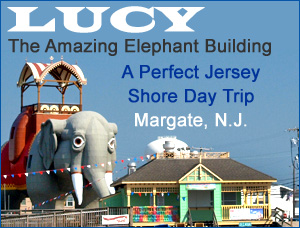|
Like most other government-operated historical sites, the Indian King Tavern Museum has long been strapped for money and unable to carry out many of the interior restoration projects envisioned decades ago by its supporters. In fact, during its first 85 years as a museum, the building's major rooms remained empty because there was no budget to fill them with the types of furniture that would have been in place during colonial times. Also missing was the distinctive, cage-like, colonial era "bar" as well as the massive fireplace in the tavern's main public room.
A Call for Volunteer Craftsmen
In 1994, with an eye to the tavern's 250th anniversary celebration six years away, William Mason, then the site's historic preservation specialist, placed televison and newspaper announcements seeking craftsmen willing to volunteer their time and skills to create the authentic colonial reproductions needed to furnish most of the 8,500-square-foot tavern building. In all, eleven volunteers -- including ten carpenters and a blacksmith -- signed on to become part of an impromptu Indian King Tavern Craftsmen's Guild. At the same time, the nearby Haddonfield Lumber Company agreed to donate the wood needed for the project.
Documenting Authentic Furniture Designs
To document the exact pieces of furniture and accessories that would have been used in the tavern during the 1770s, Mason pored through the archives of other restored 1770s taverns such as Fraunce's Tavern in Manhattan, City Tavern in Philadelphia, Gadsby's Tavern in Alexandria, and the taverns of Colonial Williamsburg.
Six Years Later
Soon, he was able to distribute detailed plans to the carpenters and blacksmith. By 2000, after nearly six years of working with oak, cherry, walnut, poplar and pine, the carpenters had completed a substantial inventory of furniture, hardware and room accessories, samples of which are pictured above. This included chairs, storage chests, wooden buckets, corner cabinets, splay-leg tables, trestle tables, candle stand tables, "porridge" tables and pipe boxes. The craftsmen had also duplicated the single original remaining high-backed bench of the tavern's public dining room to recreate a set of three authentic booths, each with its own massive oak center table (above, left). In late 1999, the main part of the authentic colonial "bar" was completed. The blacksmith, meanwhile, fashioned andirons, candle holders, tavern puzzles and other items of authentic hardware.
A New Phase of Indian King History
"The response and hard work of the volunteers has been incredible," said Mason. "The whole program was like one of those old-time barn raisings -- with everybody joining in for the sheer joy of being part of it all. These crafts people are not so much shaping wood or hammering iron as they are creating new history in this place: a tavern house that has been bringing the community together for two and a half centuries, and which will continue to live on more vividly for our children because of what these volunteers are doing here today."
|



